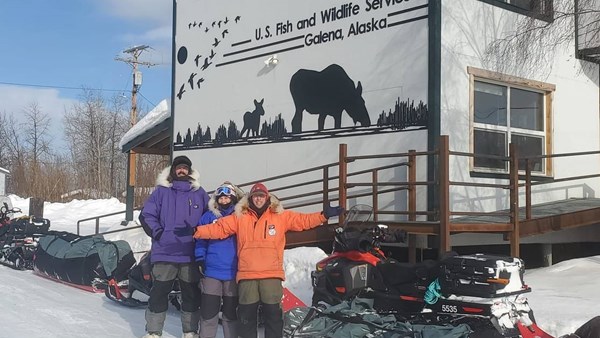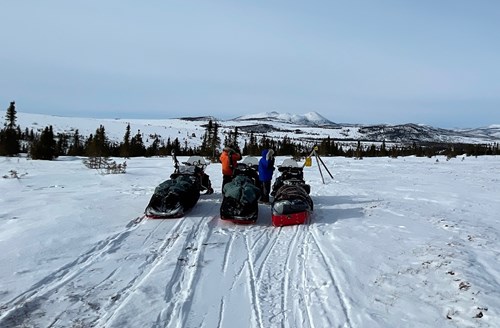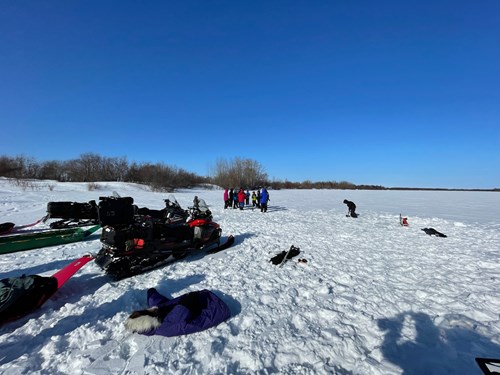28 March 2023

On Wednesday March 8th the Fresh Eyes on Ice field team, consisting of Chris Arp, Sarah Clement, and Allen Bondurant, departed for a 550 mile snow machine trip. After a false start, with the charter plane to McGrath needing to turn back within 10 miles of the destination due to weather concerns, we successfully arrived in McGrath on March 9th to organize our field gear and do science outreach activities with the McGrath school students and teachers before hitting the Iditarod trail to travel overland to Shageluk by snowmachine. After a long first day of travel, it was a short cruise into the ghost town of Iditarod to do some ice thickness and sediment investigations of the Iditarod river the following day. Our field work on this trip focused on zones of the river that tend to freeze later than others, where we took measurements of ice thickness, water temperature, velocity, conductivity, and suspended sediment, as well as ice cores and drone photos. After spending the night in the old trapper’s cabin, we had a pleasant 55 mile cruise into the village of Shageluk on March 15th.

In Shageluk, we worked with kids of all ages to brave the cold and blustery weather to help take their monthly community ice thickness observations. The next day they repaid the favor by helping us with our investigations on the Innoko river. We were joined on this leg of the trip by Amanda Byrd who is helping us tell our Fresh Eyes on Ice story through photos and videos. After our stay in Shageluk, though, it was time to be hitting the trail overland to the Yukon River. We still had over 300 miles to go to reach our final destination, Galena.

For our first day out of Shageluk, March 19, we had great weather and travel conditions, hitting several of our field sites on the Yukon and traveling over 100 miles. We reached the Eagle Island Iditarod checkpoint where we decided to camp. The next morning we woke to snowy and windy conditions, although warmer temperatures. Traveling in low visibility we were able to visit a few more of our field sites before returning to camp to dry out and pack for our next leg. Traveling and working along the trail to Kaltag was great, but we camped just short of town so we could visit one more site in the morning before fueling up and heading on our way. On March 22, we followed the tracks from an overnight wolf pack into Kaltag where we left the Iditarod trail. Luckily, the village to village travel picked up on this part of the river and we had a well-traveled and well-marked trail the rest of the trip. One more night of camping just outside of Koyukuk and a short travel day on March 23, we arrived into Galena where we were greeted by Karin Bodony of the USFWS refuge office.

In Galena, we had a chance to unwind and dry out, leaving us refreshed to spend some time at the Spring Kids Carnival watching the ski & snowshoe races and talking to folks about river conditions. On Sunday we cut a few ice blocks from the lake and the river to show off at our community pizza night, as well as retrieved FEOI masters student Cristina Ornelas’ overflow monitoring station. Monday we spent the day with the 4th and 5th graders, talking ice science and helping with their monthly measurements, before hosting a community pizza night to share more about our project and get one last chance to learn more about river conditions from students and their parents. By Tuesday, it was time to store our gear and ship the rest back to Fairbanks, before hopping on a plane to town ourselves. The next steps will be digging into the data we gathered on this trip and seeing what we can learn about the river ice conditions.